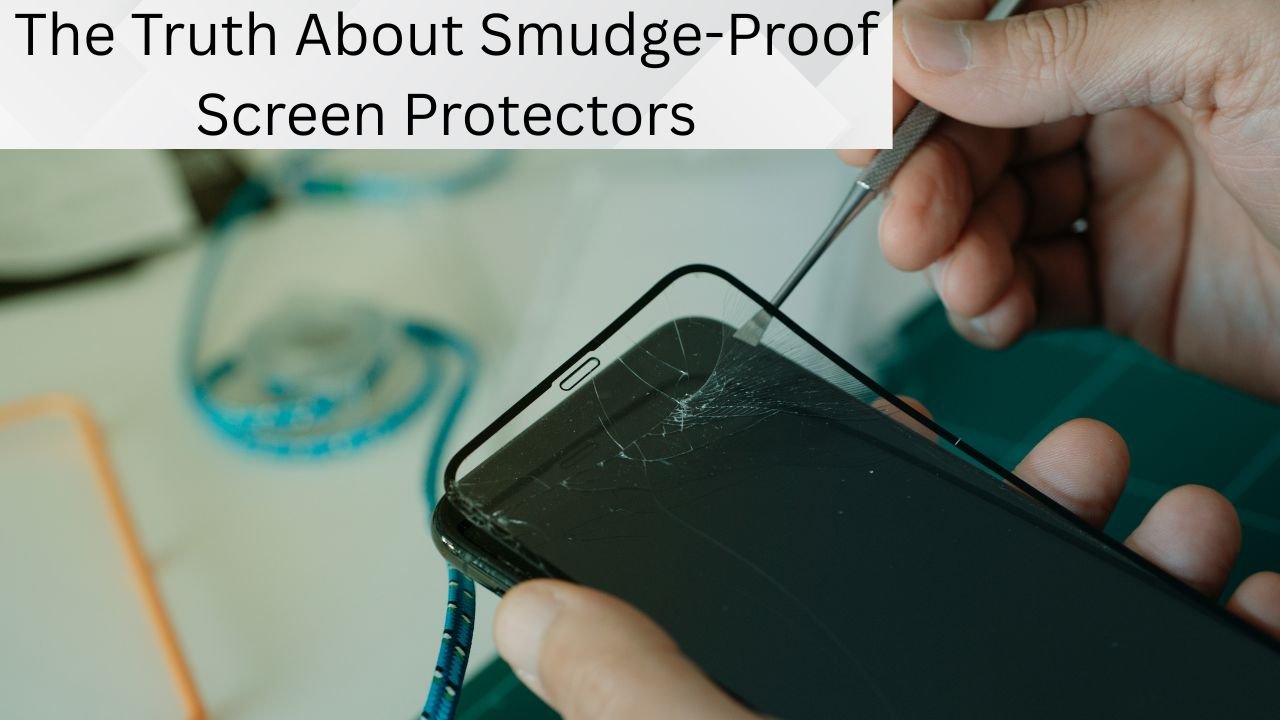Introduction: Why Are Screens Always Smudged?
We all know that annoying feeling of seeing fingerprints all over our smartphone screen right after cleaning it. Manufacturers promise “smudge-proof” screens with oleophobic coatings, but do they actually work?
Yes, oleophobic coatings do work. They create a slick, microscopic barrier on the glass surface that repels oils and fingerprints, keeping screens looking cleaner for longer. Still, it’s not magic. Smudges aren’t gone completely, and the coating wears off over time.
In this article, I’ll explain what oleophobic coating is, how it functions, its benefits and limits, how long it lasts, and whether it’s worth paying for a screen protector with this feature. Stick with me, and you’ll know exactly what to look for next time you buy one.
What Is Oleophobic Coating?
The term oleophobic literally means “oil-fearing.” It’s a thin, transparent layer applied to glass surfaces like your smartphone screen or tempered glass screen protector.
- What it’s made of: Most coatings use fluoropolymers or silicones, similar to the non-stick layer you find on a Teflon pan.
- How it’s applied: Manufacturers often use vapor deposition or chemical dipping processes to bond the layer to the glass surface.
By reducing the surface energy of the glass, the coating makes it difficult for oil molecules to stick. Instead of spreading out like an ugly smudge, the oil beads up, making it easier to wipe off. Think of how water behaves on a freshly waxed car—that’s exactly how your screen reacts.
For a deeper dive into screen protection types, check out PET, TPU, or Tempered Glass – Which One Is the Best?.
How Does Oleophobic Coating Work?
At a microscopic level, smartphone glass isn’t smooth. It has tiny pores where oil and dirt can settle.
Oleophobic coatings fill these micro-imperfections, creating a uniform, slick surface.
- Repels oils: The coating discourages oil adhesion, meaning fingerprints appear lighter and are less visible.
- Improves glide: Ever noticed how some screens feel silky when you swipe? That’s the reduced friction caused by oleophobic treatment.
- Easier cleaning: Smudges wipe off in seconds with a soft cloth, unlike untreated glass where oils smear and resist cleaning.
The “smudge-proof” claim is a bit of a stretch. It’s better to think of it as smudge-resistant—fingerprints won’t vanish completely, but they’re much less noticeable.
Benefits of Oleophobic Coating on Screen Protectors
- Fewer Fingerprints
No one likes a greasy screen. Oleophobic coatings dramatically cut down on visible smudges, keeping your display clearer for longer between wipes. - Easy Cleaning
You can wipe away oils, makeup, or residue with a single swipe of a microfiber cloth. No harsh cleaners needed. - Smooth Touch Response
Swiping and scrolling feel faster and more responsive thanks to the coating’s low-friction surface. Gamers and heavy texters love this feature. - Better Viewing Experience
A cleaner screen means brighter colors and better clarity, especially in sunlight or bright lighting. - Premium Feel
There’s something about that glassy, smooth texture—it just feels like a high-end device. If you want extra durability, you might compare options like 9D vs 11D tempered glass to see how coatings enhance overall performance.
Limitations: What You Should Know
- Not 100% Smudge-Free
The marketing term “smudge-proof” is misleading. You’ll still see some residue, especially if you have oily skin or use your phone after eating. - It Wears Off
Every tap and swipe gradually erodes the coating. Over 3–9 months, depending on quality, you may notice your screen feels “stickier.” - Quality Varies
Cheap screen protectors often use thin, low-grade coatings that can fade within weeks. Premium tempered glass options with a proper hardness rating, like 9H tempered glass, tend to last longer. - Scratches Ruin It
A scratch cuts through the coating, creating a spot where oil clings. Once scratched, you can’t fix that patch—only replace the protector.
How Long Does Oleophobic Coating Last?
Most high-quality coatings last around 6 to 12 months with normal use, while budget options may fade after 2–3 months. Factors that affect lifespan include:
- Daily usage – Heavy gamers or constant scrolling wear it down faster.
- Cleaning methods – Using alcohol wipes or abrasive cloths destroys the coating quickly.
- Environmental exposure – Heat, dust, and humidity accelerate degradation.
How to Maintain and Restore Oleophobic Coating
To make it last longer:
- Use a microfiber cloth to clean your screen.
- Avoid harsh chemicals like alcohol or ammonia-based cleaners.
- Don’t use rough paper towels—they act like sandpaper over time.
Can you restore it?
Yes, but not permanently. DIY kits with liquid oleophobic solutions exist. They add a temporary oil-repelling layer, but it won’t last like the factory finish—expect weeks, not months of performance. If the coating is fully gone, replacing the screen protector is the better move. You can also explore alternative materials like hydrogel screen protectors vs tempered glass to see if they suit your usage.
Is an Oleophobic Coated Screen Protector Worth It?
Absolutely. For a few extra dollars, you get a cleaner screen, smoother touch, and less daily frustration. It’s especially worth it if you use your phone outdoors or watch a lot of videos.
Just remember:
- Stick with trusted brands.
- Check reviews that mention coating longevity.
- Know it’s not permanent, but it’s worth the comfort.
Conclusion
Oleophobic coatings on screen protectors do work. They don’t make your screen immune to fingerprints, but they make them far less noticeable and incredibly easy to clean. Over time, the coating will wear out, but proper care extends its life significantly.
When shopping for your next screen protector, prioritize oleophobic protection—it’s a small feature that makes a big difference in everyday use.



